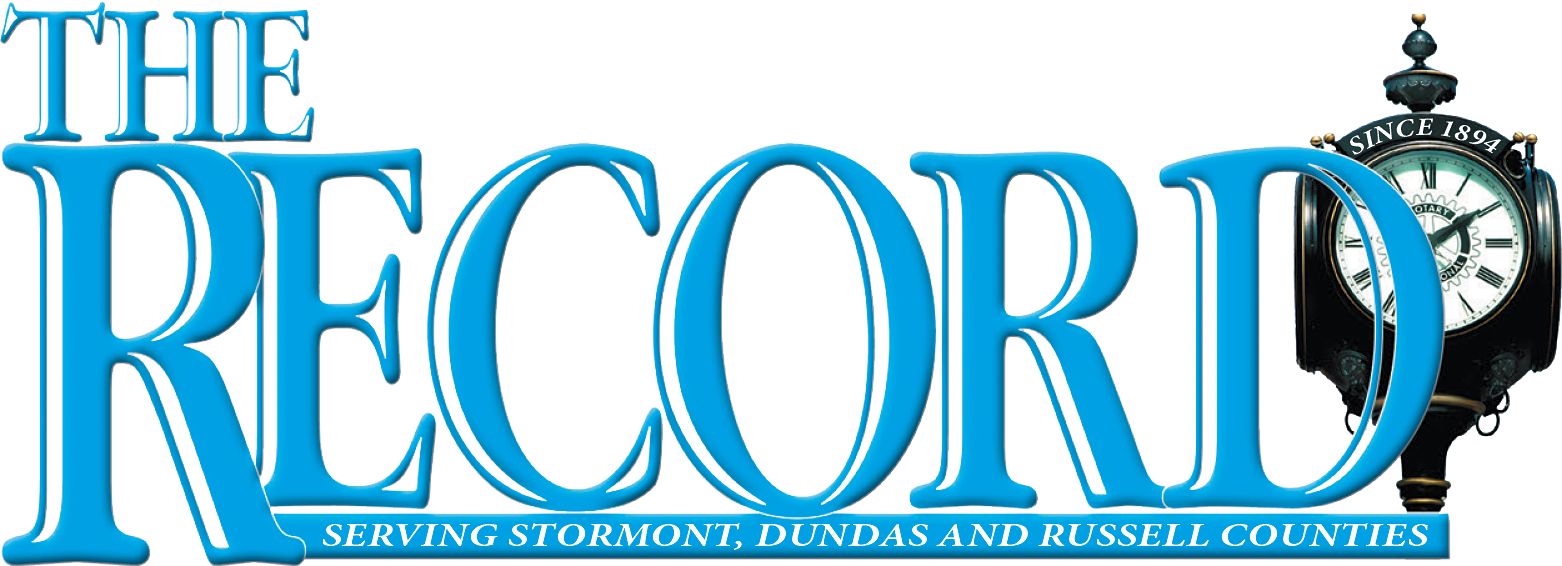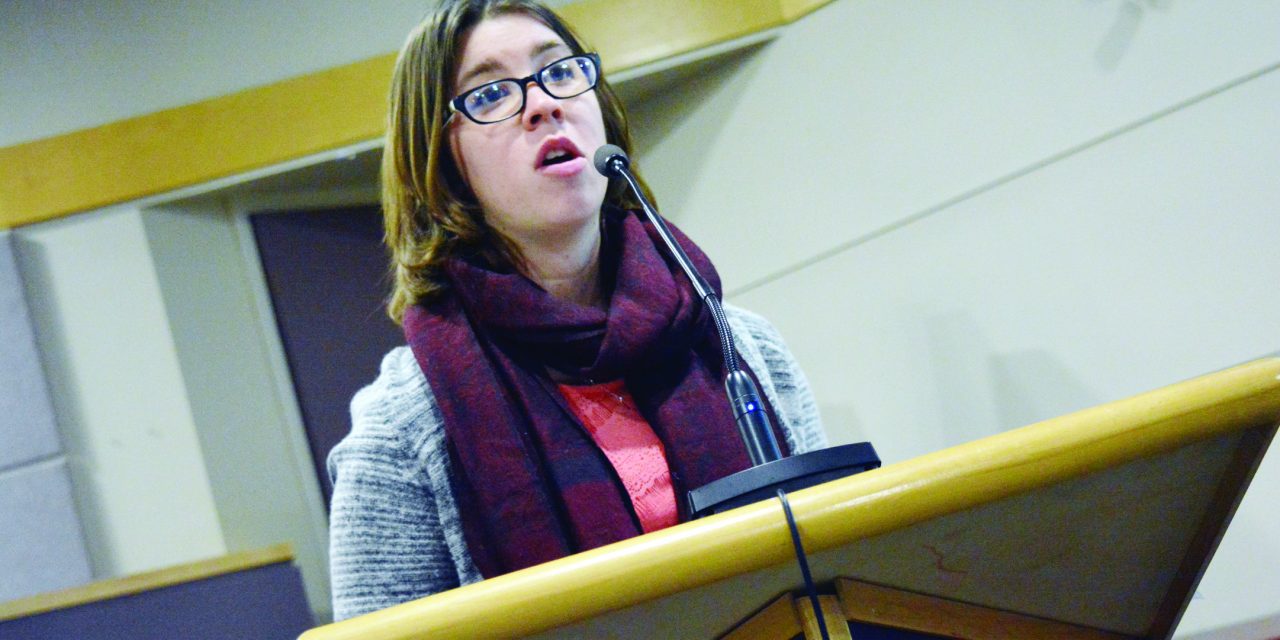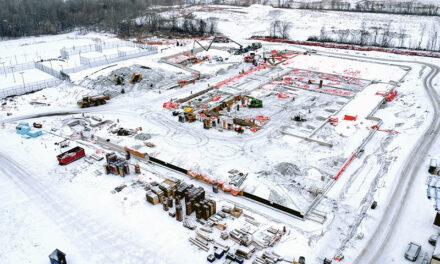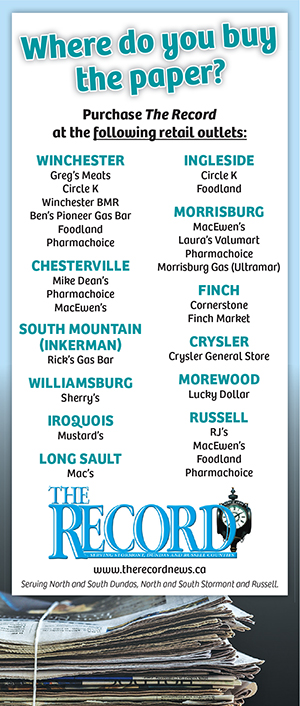MTBA intern architect Carly Farmer was in charge of leading the presentation on the panel’s findings through their study of the potential for a heritage district in the area, which was approved by council last March. Glover photo
EMBRUN – Back in March 2018, the Russell council approved a study to explore the options of a potential Heritage Conservation District for the village and after a seven month-long study, the panel shared their findings and feedback Wed., Feb. 20 during the third and final consultation.
“For context, MTBA did a report back in 2015 looking at the individual properties around the township that might merit a potential designation under the Ontario Heritage Act,” said Carly Farmer, MTBA intern architect, giving the presentation on the district. “During this investigation, we identified that there were some clusters of heritage resources at the core of the village of Russell. That brought us to this study that we are currently working on.”
The county official plan was stated to protect cultural heritage resources within their jurisdiction by using the Ontario Heritage Act for designations. The official municipal plan is that significant built heritage resources and cultural heritage landscapes shall be conserved.
“Both plans state very clearly their desire and goals to conserve heritage resources within the community,” said Farmer. “This is part of a strategy that isn’t described in each plan. Also, there are a lot of county roads that run through the study area and the high traffic on these roads, specifically the large commercial vehicles, are problematic for many residents and there’s some tension there between the local heritage goals and regional traffic management strategy.”
The idea behind the Heritage Conservation District is to designate an area in the township with a concentration on heritage resources with a distinguishable special character or historical association that the community values.
“The goal of the Heritage Conservation District is not to stop change, but to manage change so that it’s done in a way that respects the values of what we have,” said Farmer. “There are a lot of benefits including a unique planning framework which recognizes these values and takes them into consideration as the district changes and evolves over time.”
Other benefits of the district that Farmer presented to the community include sustainability, durability and stability of the community; stable or increased property values, potential financial incentives and community pride.
Farmer explained that while the village of Russell covers an area of 551 hectares, their study area covers approximately 41.4 hectares, or 7.5 per cent of the village area.
“There’s about 180 properties in the area and we’re looking at each one individually and how they contribute overall in the big picture of the area,” she said.
In the last meeting, the historical overview was looked at very deeply, but some research was done since then and Farmer was very excited to share her findings.
“Forced Road is particularly interesting because this road is said to follow an indigenous trail which connects the St. Lawrence river near Cornwall up to the village of Cumberland on Ottawa River,” she said. “It follows the highpoint of ground through that area. So, we know there’s a portion of Forced Road that still exists in the area that is still called by this name, even though it’s just outside the study area. We know, or it is said, that Forced Road crossed the Castor River along Wade Road, so cross referencing historic maps and a logical way things may have developed, it’s very possible that Forced Road crossed Mill Street. Don’t know for sure but it’s our best guess.”
Other key development milestones and events that Farmer brought up during her presentation included; the old school that was replaced by the new one, the great fire of Russell that destroyed much of the downtown core and the Russell Fair, which has been running continuously since 1858.
“There’s also a lot of new development and it’s projected that there will be a lot more,” said Farmer. “Almost 3,000 new homes coming in between 2011 and 2036, that’s what projected. Also, of course, the new Amazon warehouse. All of these factors increase pressure for both development and redevelopment within the village of Russell.”
According to Farmer’s presentation, zoning bylaws largely support the Heritage Conservation District with some considerations. These considerations include managing transitions between mixed use and residential zones, strategically maintaining open space and first right of refusal for school grounds.
In 2009, the University of Waterloo and the Architectural Conservancy of Ontario deeply studied heritage districts in the province about how effective they were and how people reacted to leaving near them.
“In general, 78 per cent of the people surveyed were either satisfied or very satisfied and only six per cent did not like being in the district,” said Farmer. “Most properties either maintained their value or increased slightly, generally properties in these districts, the values are a bit more stable.”
A survey questionnaire of open-ended and multiple choice questions was also presented to residents through the township’s website from Nov. 8 to Dec. 5 of last year to gauge the public opinion on Heritage Conservation Districts.
A total of 95 people responded to the questionnaire, approximately two per cent of the population. The results showed that 70 per cent of the respondents were unaware that a study was happening and less than 15 per cent felt that the study was unimportant.
Two-thirds of the respondents had visited a heritage district in Ontario and 88 per cent support an Heritage Conservation District in Russell and 50 per cent of them would like more information. 90 per cent want to protect the historical features of the village and 10 per cent showed that they were not in favour due to high costs for homeowners.
Reporter/Photographer for Chesterville Record and Eastern Ontario Agrinews. Currently working on Record segment, “Chilling Tales from Beyond”











